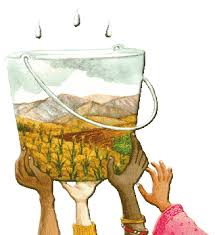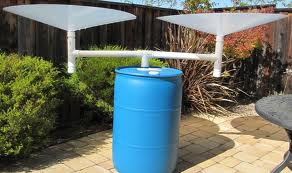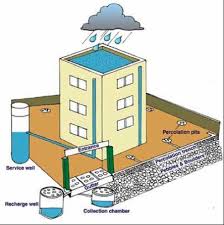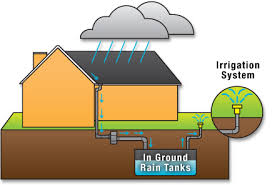The Mantra Edition is again here. Let’s talk about the kid’s favorite season, the tip top season, Monsoon. Ah! Monsoon reminds me of the “chapak dance” and for those who don’t know, “the water splashing dance”, hot pakodas or French fries, a cup of coffee and you are set for the most heavenly trip. But let’s grow up and be a bit more responsible. Enjoy the rain exactly as you did the last monsoon, but this time prepare for it beforehand.
So the Monsoon mantra 2014 is: Catch the water where it falls and use it in future when nature calls or the water table level falls.

Don’t just use the umbrella over the head. We are in an era of great turmoil, so fix it up by holding the umbrella upside down and collecting the rainwater and keeping it in store for future needs. In layman’s language, what I mean is to save rain water or what is popularly branded as ‘Rainwater Harvesting’.
Rainwater harvesting is a course of action where the rain water falling, over the rooftops, the land surfaces and rock catchments, is accumulated and stored using simple techniques such as jars, tubs, big containers and even complex techniques such as underground check dams. The water then serves as a relief when the locality experiences shortage of water supply or for general drinking purposes. Uses also include water for garden, water for livestock, water for irrigation, and indoor heating for houses etc. In many places the water collected is just redirected to a deep pit with percolation. The harvested water can be used as drinking water as well as for storage and other purpose like irrigation. This ancient practice is currently growing in popularity throughout our communities due to interest in reducing the consumption of potable water and the inherent qualities of rainwater.
There are certain methods of rain water harvesting itself. Commonly used systems are constructed of three principal components; namely, the catchment area, the collection device, and the conveyance system. Rainwater harvesting systems can be installed with minimal skills. The system should be sized to meet the water demand throughout the dry season since it must be big enough to support daily water consumption.
• The most common method that even we must noticed around us is the mere placement of a large container in the lawns or balconies and thereby using the collected water for domestic purposes and not drinking since it is not purified.
• The second option left with the environment lovers is the collection of rainwater falling over their rooftops. The water is then directing through pipes, towards a large tanker sort of container mostly at the backside of the house. The rooftop then serves as a catchment device and the tanker serves as the storage site.
• A newer approach towards rainwater harvesting is the use of an upside down umbrella sort of device: Instead of using the roof for catchment, the RainSaucer, which looks like an upside down umbrella, collects rain straight from the sky.

This decreases the potential for contamination due to the rain water falling over the roof top which is full of dirt, bird waste and filth from all around. Other applications of this free standing rainwater collection approach are sustainable gardening and small plot farming.
For a suitable rainwater harvesting system, specifically, the rainfall capturing area such as a building roof must be large enough to maintain adequate flow. The water storage tank size should be large enough to contain the captured water.
The quality of rainwater is substantially improved by various methods. The concentration of contaminants is reduced significantly by diverting the initial flow of run-off water to waste i.e the first course of rain is used for the washing of the catchment and the following water is then collected.
Rainwater harvesting is advantageous in numerous aspects.
• Firstly, it is an all-purpose system which can be used for all sorts of climatic conditions. Collecting rainwater can serve help during drought conditions. The system of rainwater harvesting can collect water and thus control flooding collection of rain water can also avoid soil erosion and thus the flow of chemicals and pesticides flowing in the nearby water bodies. And if not in the extreme condition, rain water harvesting can be used anytime for simple domestic purposes and drinking needs.

• Secondly, it reduces the need for imported water. Many countries meet the water needs by importing water in drought scenarios.
• Thirdly, it serves as an excellent source of water for landscape irrigation, with no chemicals such as fluoride and chlorine, and any dissolved salts and minerals from the soil. Thus no filtration system required.

• Fourthly, cost cutting process with low installation cost. Home systems can be relatively simple to install and operate may reduce your water bill.

• Fifthly, it can most importantly serve in sustaining the ground water table and minimise dependence on wells. Thus an excellent way of improving the water cycle.
So start collecting and compete with your friends in the terms of buckets of water collected and stored by each one you.
#Eat Green, Stay Green, Live Green!

Leave a Reply